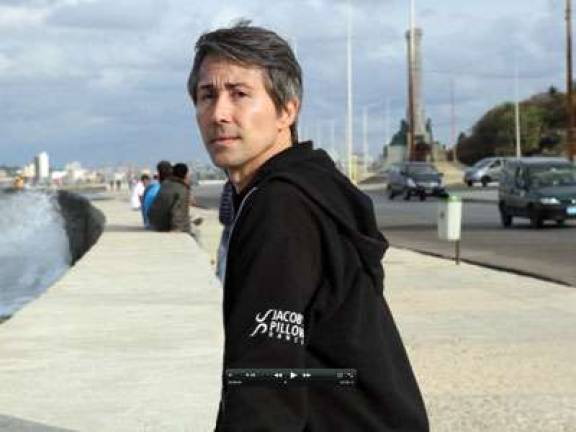Dancing Between Two Worlds

By Julie Cohen Cuban-American Choreographer returns home and brings back new piece and dancers to the States In a lot of ways, dancer and choreographer Pedro Ruiz is the quintessential New Yorker. He's spent decades on the arts scene A-list-21 years as the principal dancer at Ballet Hispanico, followed by teaching and choreographing gigs with Alvin Ailey and the Joffrey Ballet. The apartment he shares with his partner of 12 years, Andy Aachsen, and a spirited King Charles Spaniel named Vienna, is perfectly situated for regular runs to Lincoln Center and Fairway.
But in the 37 years since his family first arrived in the U.S. when he was a teenager, part of Ruiz has always remained in his native Cuba. A pretty big part, it turns out.
"The blood, the Cuban blood, I feel running like a river through my veins," said Ruiz.
So when Ruiz was invited by Danza Contemporanea de Cuba, the island nation's top modern dance troupe, to come to Havana and choreograph a work with them, there was no question he'd say yes. After some negotiation and much bureaucracy, both the U.S. and Cuban governments approved the project.
Officials also allowed a PBS film crew, of which I was the director, to accompany Ruiz on the trip to document both his journey home and the creation of Horizons the first ever dance choreographed by a Cuban-American choreographer for a Cuban company. The dance premiered at Havana's Mella Theater in January of this year. Then the Cuban dancers came this past May to New York City for a two-week run at the Joyce Theater in Chelsea, the first time any of them had ever been to the U.S.
The artistic exchange was a powerful reminder that 50 years after the U.S. cut political and economic ties to Cuba following Fidel Castro's Communist revolution, a deep human connection between Cubans and Cuban Americans remains.
That connection was especially apparent inside Danza Contemporanea rehearsal studios. "It's back to my roots," Ruiz noted after watching the dancers go through an Afro-Cuban drill combining rigorous technique with Caribbean soul. "It's back to my identity. It's back to who I am."
And the immediate bond he felt with the dancers was mutual. "When I see Pedro, I see a Cuban," said dancer Yaday Ponce.
Working together for four weeks, Ruiz and 16 of Danza Contemporanea's dancers created a 30-minute work incorporating Cuban and American influences. Ponce, a tall and regal dancer who wears her hair in a dramatic Afro, represented Yemaya, the Afro-Cuban goddess of the sea. Entering the stage on the shoulders of two male dancers, she raised her arms with a command that made her convincing in the goddess role.
In between grueling rehearsal sessions, Ruiz and the dancers took some time to get to know one another, as dancers and as people. They talked art, food, hometowns and family. But there wasn't much talk of politics.
That was a deliberate choice on Ruiz' part. He's well aware he's walking a delicate line. His goal, pursued through a U.S. non-profit called The Windows Project, is to foster artist-to-artist and artist-to-audience connections between Cubans and Americans, to help thaw relations between the two countries from a grassroots level. But the Castro government is notoriously sensitive to criticism-any hint of it could get his exchange programs banned.
"I'm an artist and for me the more important thing is this wonderful cultural exchange," he said. "Art has much more weight to open doors than politics."
The Cuban audience who welcomed Horizons, and Ruiz, with an opening-night standing ovation seemed to prove his point. And so did the New Yorkers who went wild for Danza Contemporanea during its run at the Joyce in May.
The dancers themselves were thrilled, if a bit overwhelmed, by their trip to Manhattan.
"New York is a fascinating city, so much movement," said Ponce.
"It's the capital of the world, no? The center of the world. I say it's amazing," enthused Osnel Delgado. In between performances, he and the others visited Central Park, Times Square and the Statue of Liberty.
"It's so developed, so many things we haven't seen before," added Edson Cabrera.
They were less impressed by the weather (chilly) and the food (fast). But they well understood their visit was far more than a sightseeing trip.
"We feel like we're constructing the next step," Cabrera said. "The culture between our pueblos."
Julie Cohen is the director of Pedro Ruiz: Coming Home, which airs Sept. 29 at 8 p.m. on WNET. Top image: A scene from Horizons, the first ever dance choreographed by a Cuban-American for a Cuban dance company. The piece was staged at Havana's Mella Theater and the Joyce Theater in New York City this year. PHOTOS BY ALEX LOWTHER, BETTER THAN FICTION PRODUCTIONS.